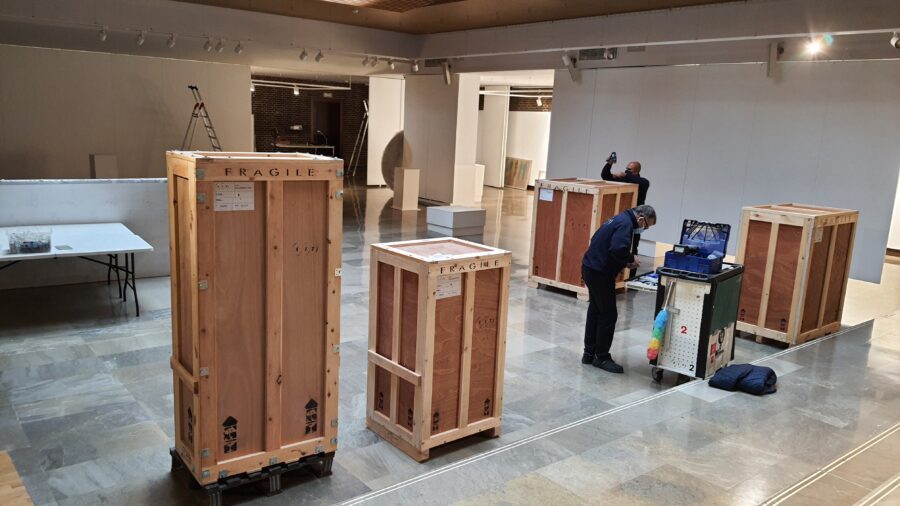
How to transport a work of art?
Behind every work of art you see in a museum or exhibition, there is a team of specialised logistics operators in charge of transporting these works with the greatest possible care.
When you think of moving lorries, the first thing that comes to mind are lorries for simple private removals, but we don’t really think in detail about how the transport of large works of art of great economic and cultural value works.
The handling of works of art and their subsequent installation in exhibitions or art galleries is an activity that not everyone can do, it is a very complex procedure that involves extreme delicacy.
These are works of art with an incalculable cultural value and each piece of art requires a specific intervention and specific techniques, and this is where companies with specialised transporters come in.
Who makes the transfer and handling of works of art possible?
These operators are the ones who make it possible for the spectator to experience a moment of enchantment in front of a work of art, who handle and contribute to the protection of these cultural assets with specialised logistics, attention to the smallest detail and complex care, taking into account different factors such as storage, packaging, risk assessment, insurance, ministerial and/or customs formalities, etc.
The main objective of those who provide this type of service is to protect and conserve the works of art during their transportation and subsequent installation, which is why they handle a very fragile load, as each item requires a specific intervention with a great deal of prior planning.
Works of art are the most vulnerable goods when it comes to transport, which is why specialised companies adapt their vehicles to deliver the pieces in the safest way possible.

The transport of works of art is characterised by the following requirements:
- Adequate security of the transported items
- Adequate packaging
- Climatic conditions (humidity and temperature)
- Strictly defined time of completion
- Compliance with legal regulations


Therefore, state-of-the-art equipment is indispensable to minimise as much as possible any damage or inconvenience such as discolouration, smudges, fingerprints, drops and bumps, etc.
The right temperature, air humidity, light intensity, etc. must also be taken into account.
Whether it is a painting, a sculpture or an antique piece of furniture, each of them is treated as a particularly fragile object by taking all the necessary measures.

The first step before starting the move is to check that the work is in good condition, this process is called a condition report and is done at each point along the journey of the work.
This report serves to verify that the object can be transported and is not too fragile, but also to ensure that it has not been damaged during transport.
It reflects every detail and defect that the work may have had before it was packed and represents a written proof that will be required by the insurance in case of any subsequent damage.
Once all these checks have been made, we move on to the preparation and packing of the work.
This step is very important to ensure that it is well protected throughout the journey. The packaging must be able to withstand shocks, deformations or variations in temperature and humidity which are very common during air transport, for example.
Commonly, three layers are used to protect works of art:
- A flexible, chemically neutral material to cover it.
- A thick layer that is able to absorb shocks or drops
- A final rigid packaging
Once properly packed, it is placed in a container adapted to its size and weight, i.e. a custom-made box depending on your needs (airtight, rigid cardboard, wood, etc.) especially if the shipment is long-distance.
Finally, it is important that all administrative formalities are in order, whether for imports or exports, there are certain necessary documents that are shared by most shipments:
- Invoices
- List of contents if it is more than 1 package
- Photos
- Documents of the time period of stay
- Bank guarantee in some cases
- Cultural permits, etc.
Conclusion:
These are the main precautions to take into account if you want to transport a work of art.
As a company specialising in the transport of works of art, SIT Spain has professionals who are experts in Fine Arts with knowledge in the management of all activities related to the handling of valuable pieces.
In addition to being specialists in transport, SIT Spain assists in all phases of the process, from the design and manufacture of packaging adapted to the needs of each piece to the latest technology in preventive conservation.